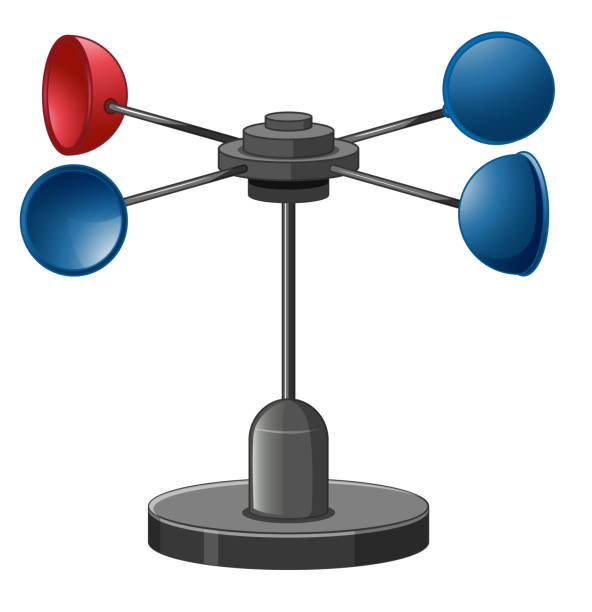Professional Tips for Adjusting Your Anemometer for Ideal Performance
Professional Tips for Adjusting Your Anemometer for Ideal Performance
Blog Article
All You Need to Know Concerning Anemometers: Just How They Work, Why They Issue, and Where to Use Them
Anemometers, however frequently neglected in the world of scientific instruments, play a critical duty in different areas, offering important insights right into wind rate and air movement patterns. As we dive right into the intricacies of anemometer innovation, we will certainly uncover the internal operations of these devices, their importance, and the essential factors to consider when choosing the ideal anemometer for details applications.

Anemometer Basics
A vital instrument utilized to measure wind rate and direction, the anemometer plays a vital role in weather forecasting and different sectors. An anemometer typically is composed of three or 4 cups that rotate in the wind, a vane that directs into the wind, and sensors to track the activities or rotations.
There are various types of anemometers offered, consisting of mug anemometers, vane anemometers, hot-wire anemometers, and sonic anemometers, each with its unique functions and applications. Mug anemometers are typically utilized for fundamental wind speed measurements, while vane anemometers are favored for directional dimensions.
Principles of Anemometer Procedure
Structure on the foundational understanding of anemometer fundamentals, the principles of anemometer procedure illuminate the mechanics behind wind speed and instructions measurements. Anemometers operate the concept of air flow influencing a sensor, causing it to turn. Mug anemometers, for instance, have 3 or even more mugs that capture the wind, causing them to rotate faster as the wind speed rises. The turning rate is then transformed right into a wind rate dimension. Vane anemometers, on the various other hand, utilize a tail or a probe that straightens itself with the wind direction, giving a dimension of wind direction based on the alignment of the sensing unit. Hot-wire anemometers depend on a warmed cable that cools down as wind overlooks it, with the rate of cooling down determining the wind speed. Ultrasonic anemometers procedure wind speed and direction by analyzing the time it takes for ultrasonic signals to travel between transducers. Recognizing these concepts is important for precise and trustworthy wind measurements in various applications.
Relevance of Anemometers
Anemometers play a vital duty in gauging wind rate and instructions, giving crucial information for climate projecting, climate research studies, environmental monitoring, and air travel procedures. Meteorologists rely on see page anemometers to collect precise wind information, assisting them recognize climate patterns, forecast tornados, and problem prompt cautions to the public. Wind farm operators make use of anemometers to analyze wind problems and maximize electricity production from wind turbines.
Applications Across Numerous Industries
In the sustainable energy market, anemometers play a crucial role in evaluating wind conditions for wind farm placements, ensuring optimal power manufacturing. Industries like building and construction and mining make use of anemometers to check wind rates, vital for safety and security methods, specifically when functioning at heights or in open-pit mines where strong winds can pose threats. In farming, anemometers help farmers in managing crop splashing by supplying real-time data on wind speed to avoid drift.

Picking the Right Anemometer for Your Needs
For basic functions, a cup anemometer is appropriate for measuring wind speed, while a vane anemometer provides wind instructions information. Hot-wire anemometers are suitable for low airspeed measurements, and ultrasonic anemometers provide high accuracy and durability.

Verdict
In final thought, anemometers play an essential duty in measuring wind rate and instructions throughout various markets. It is vital to consider the relevance of anemometers in order to click to investigate make enlightened decisions when choosing the most appropriate tool for gauging wind conditions.
There are numerous kinds of anemometers readily available, including cup anemometers, review vane anemometers, hot-wire anemometers, and sonic anemometers, each with its special attributes and applications. Mug anemometers are commonly used for fundamental wind speed dimensions, while vane anemometers are favored for directional dimensions. Hot-wire anemometers are ideal for low airspeeds, and sonic anemometers are optimal for high-precision dimensions in research study and commercial setups.Structure on the fundamental understanding of anemometer essentials, the concepts of anemometer procedure clarify the mechanics behind wind speed and direction measurements. For general purposes, a cup anemometer is suitable for measuring wind speed, while a vane anemometer offers wind direction data.
Report this page